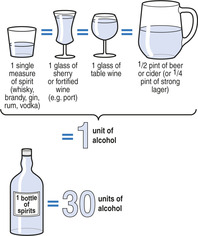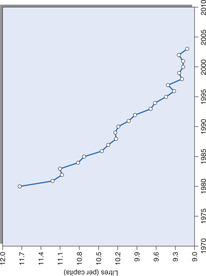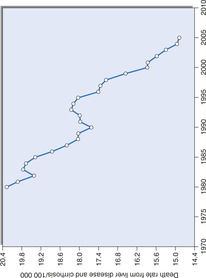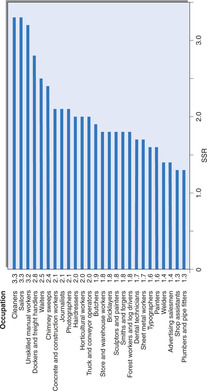These definitions are based on WHO recommendations and ICD-10.
Acute intoxication
A transient condition following the administration of a psychoactive substance, causing changes in physiological, psychological or behavioural functions and responses.
Dependence syndrome
The use of psychoactive substances has a higher priority than other behaviours that once had higher value. There is a desire, often strong and overpowering, to take the substance(s) on a continuous or periodic basis. Tolerance may or may not be present.
Harmful use
A pattern of psychoactive substance use that is causing damage to physical or mental health.
Physical dependence
An adaptive state in which intense physical disturbance occurs when the administration of a psychoactive substance is suspended. There is a desire to take the substance to avoid the physical symptoms of the withdrawal state.
Psychological dependence
A psychoactive substance produces a feeling of satisfaction and a psychological drive that requires periodic or continuous administration of that substance to produce pleasure or to avoid the psychological discomfort of its absence.
Withdrawal state
Physical and psychological symptoms, which may be complicated by delirium or convulsions, occur following absolute or relative withdrawal of a psychoactive substance after its repeated use.
ALCOHOL PROBLEMS
The concentration of alcohol in beverages may be given as a ‘proof’. In the USA 1° proof is 0.5% by volume (v/v). In Britain 1° proof is 0.5715% by volume.
One unit is approximately 8–10g alcohol (Fig. 4.1).
 |
| Figure 4.1 (With permission from Puri BK, Laking PJ, Treasaden IH 2002 Textbook of psychiatry. Churchill Livingstone, Edinburgh.) |
Types of alcohol problem
Excessive consumption
The Royal College of Physicians has defined low-risk levels of consumption as up to 21 units of alcohol per week for men and up to 14 units per week for non-pregnant women. This amount should not be consumed in one go, and alcohol should not be consumed every day, for these levels to apply. Consumption in greater amounts is regarded as excessive and carries a much greater risk of developing alcohol-related disabilities and dependence.
Alcohol-related disabilities
Physical complications of excessive alcohol consumption include gastrointestinal disorders, malnutrition, hepatic damage, pancreatitis, hypertension, arrhythmias, iron-deficiency anaemia, macrocytosis, folate deficiency, nerve and muscle disorders, accidents and trauma, increased risk of infections (e.g. tuberculosis) and increased risk of cancer of the oropharynx, oesophagus, pancreas, liver and lung. Drinking in pregnancy can cause the fetal alcohol syndrome.
Alcohol-induced amnesic syndrome is frequently preceded by Wernicke’s encephalopathy, caused by thiamine deficiency, which may be reversible in its early stages through abstinence and high-dose thiamine treatment. Its features include:
Social complications include the breakdown of relationships, marriages and families (because of mood changes, personality deterioration, verbal abuse, physical violence, psychosexual disorders, delusional jealousy, and associated gambling and illicit drug use), poor performance at work, crime (e.g. arson, sexual offences and homicide) and accidents and trauma (e.g. road accidents).
Problem drinking
This is said to occur when chronic heavy drinking causes alcohol-related disabilities.
Alcohol dependence
The following symptoms form the alcohol dependence syndrome:
• Primacy of drinking over other activities
• Subjective awareness of a compulsion to drink and difficulty in controlling the amount drunk
• A narrowing of the drinking repertoire
• Increased tolerance to alcohol
• Repeated withdrawal symptoms
• Relief or avoidance of withdrawal symptoms by further drinking
• Reinstatement of drinking after abstinence.
Epidemiology
Indices of alcohol consumption
Useful indices are figures for hepatic cirrhosis mortality (Fig. 4.2), drunkenness offences (including drink-driving offences), psychiatric hospital admissions for alcohol abuse, and surveys.
 |
 |
| Figure 4.2 (a) EU alcohol consumption, in litres per capita, from 1980–2003. (b) EU standardized death rate from liver disease and cirrhosis for all ages per 100 000 people, from 1980–2005. The relationship between the two graphs, and therefore between alcohol consumption and death from liver disease and cirrhosis, is seen. (Data from the European Health For All database (HFA-DB) of the World Health Organization Regional Office for Europe, www.euro.who.int/hfadb.) |
Sex
The prevalence and lifetime expectancy of heavy drinking is higher in men.
Occupation
Occupations at high risk are shown in Figure 4.3.
 |
| Figure 4.3 (Data from Hemmingsson T, Lundberg I, Romelsjö A, Alfredsson L 1997 Alcoholism in social classes and occupations in Sweden. International Journal of Epidemiology 26: 584–591.) |
Aetiology
Individual causes
These include the availability of alcoholic beverages to those in certain occupations, stressful jobs, genetic factors, personality, advertising pressures, peer-group pressures and the following predisposing psychiatric disorders:
• Depression and bereavement
• Anxiety disorders
• Phobic disorders
• Schizophrenia (e.g. homeless withdrawn patients with affective flattening)
• (Hypo)mania.
Social causes
Cultural factors and economic factors (reduced real price is associated with increased consumption).








